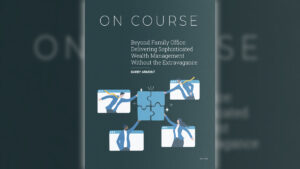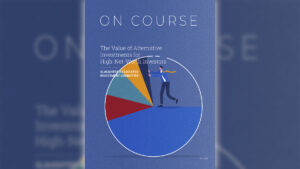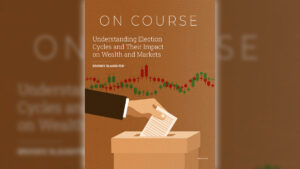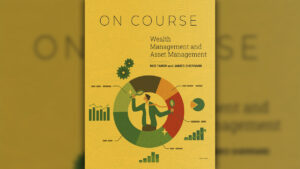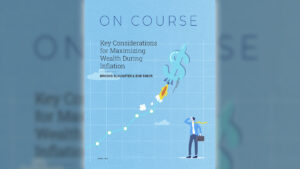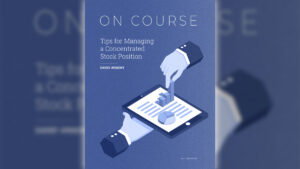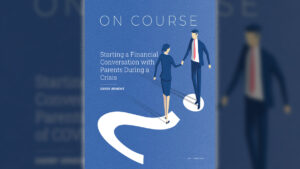Expert Articles
Five Truths That Challenge Small Business Growth; and How to Break Through
For small business owners, access to holistic true wealth management means having a partner that [...]
AI Meets Intuition: Why Technology Alone Isn’t Enough in Wealth Management
Like many aspects of life and work, artificial intelligence is also changing the way we [...]
Aligning Business Success with Charitable Impact Through Privately Held Stock
For many business owners, the wealth accumulated in their businesses is more than just a [...]
8 Keys to the ‘Big Beautiful Bill’ and What They Mean to Wealth
The U.S. House and Senate recently passed the Tax Simplification and Reform Act of 2025 [...]
Private Credit: What High-Net-Worth Families Need to Know
In recent years, a subtle shift has been occurring in high-net-worth portfolios. More and more [...]
Prioritizing Long-Term Planning for Business Owners and Their Legacy During Economic Downturns
Business owners make daily decisions that profoundly impact others. The decisions you make shape the [...]
Beyond Annual Profits: Understanding Your Business’s True Return on Investment
While many business owners meticulously track annual profits and cash flow, a crucial metric often [...]
Navigating the Delicate Dance: Communicating Your Exit Strategy to Your Management Team
As a successful business owner, you’ve navigated countless pivotal decisions, each demanding a nuanced approach. [...]
Unlock the Full Potential of Your Business with Strategic Partnerships
Any small business owner can attest that the journey is filled with challenges, triumphs, and [...]
The Benefits of a Delaware Statutory Trust for Real Estate Investments
As wealth managers, preserving and growing wealth requires carefully selecting the right strategies to meet [...]
Are You Prepared for the 2025 Sunset of Estate Tax Exemption Limits?
As wealth managers, we see firsthand the importance of strategic financial planning, especially for high-net-worth [...]
What’s Causing Chaos in Homeowners’ Insurance?
This post was authored with Hanna Ogle of Watkins Insurance Group. In recent months, we’ve [...]
The Role of Insurance in Estate Planning
Estate planning is a crucial part of ensuring your assets are managed and distributed as [...]
Avoiding Financial Strategy Collision Course
Implementing a financial strategy that maximizes wealth and defers taxes effectively for as long as [...]
Building Wealth Management Relationships for Family
More often than not, wealth management extends beyond an individual. When selecting a wealth manager, [...]
What Does it Mean to Invest as an Accredited Investor or Qualified Purchaser?
As public markets have become increasingly volatile, wealth management firms, like Richard P. Slaughter Associates, [...]
On Course Articles
Beyond Family Office: Delivering Sophisticated Wealth Management Without the Extravagance
When most people think of the term “family office,” they picture billionaires with private jets [...]
Cybersecurity and Your Wealth — 5 Ways to Protect Yourself
While you may already have safeguards in place, cybercriminals are increasingly targeting affluent people not [...]
Preparing Your Wealth for Possible Tax Reform
As conversations around potential tax reforms continue — especially concerning capital gains, estate taxes, and [...]
Enhancing Wealth Management Experiences Through Innovation
When it comes to managing your financial success, innovation is essential. A skilled wealth manager [...]
The Value of Alternative Investments for High-Net-Worth Investors
Bolstering the diversification of your portfolio is always beneficial from the standpoint of mitigating risk [...]
Safeguarding Your Financial Plan Through Market Downturns & Life’s Surprises
In the world of investing, market volatility is a certainty. Economic cycles impact financial markets, [...]
Navigating Financial Uncertainties with Resilient, Long-Term Wealth Plans
can shift almost impulsively. Constructing a long-term wealth plan that can withstand these uncertainties requires [...]
Understanding Election Cycles and Their Impact on Wealth and Markets
Election cycles in the U.S. are not only pivotal moments in our nation’s political history, [...]
Wealth Management and Asset Management
This article was co-authored with James Sherrard. Wealth management is a holistic approach to financial [...]
Ensuring Wealth Lasts for Generations
Many people wish to pass on the wealth they’ve built to future generations to continue [...]
Business Transition: Reasons to Plan Ahead
Successful business owners are adept at running and growing their businesses, yet many don’t stop [...]
Tax Loss Harvesting: Don’t Let a Loss Go to Waste
This article was co-authored with James Sherrard. Most people are familiar with traditional means of mitigating [...]
Defining Financial Success
While many people have an idea of what financial success looks like, they often fail [...]
Approaching Retirement: 7 Things to Consider
The sooner you lay a foundation for your retirement strategy, the better prepared you’ll be [...]
Key Considerations for Maximizing Wealth During Inflation
This article was co-authored with Bob Tabor. Long-term inflation like we’ve experienced for the past [...]
Passing on Wealth: Considering Multi Generations in Your Strategy
This article was co-authored with Jana Hovey. Thinking about how to pass along wealth to [...]
The Importance of Updating Estate Plans
For many people, estate plans are a difficult task to get around to. And once [...]
Tips for Managing a Concentrated Stock Position
There are many reasons a person may find themselves in possession of a large holding [...]
Estate Planning Isn’t Just About the Future
People often think about estate planning as a financial tool triggered by a person’s passing. [...]
How To Supercharge Your Charitable Giving
Giving back is a common and noble gesture that is fairly well engrained throughout much [...]
Gone Phishing: Cyber Criminals View Crisis as Opportunity
The more technology and digital innovation expands, the more cyber criminals will look for ways [...]
Creating Benchmarks to Better Monitor Investment Success
Market volatility in 2020 has seen unprecedented peaks, valleys, and even recovery. This has left [...]
Starting a Financial Conversation with Parents During a Crisis
Whether the circumstances are driven by a global pandemic, some other emergency, or just the [...]
Managing Wealth Through Times of Uncertainty
When addressing your wealth during periods of economic crisis, it’s important to recognize two facets [...]
Could You Benefit from a Health Savings Account?
Health Savings Accounts were first introduced in 2003 and have quickly grown in popularity as [...]
Does the New SECURE Act Affect Your Retirement Strategies?
Last December, the SECURE Act was passed with the objective of increasing access and participation [...]
Market and Economic Reviews
Third Quarter 2025 Market and Economic Review
The closing of the third quarter of 2025 saw markets continue to navigate a complex [...]
Second Quarter 2025 Market and Economic Review
As the second quarter of 2025 drew to a close, markets remained cautious amid a [...]
First Quarter 2025 Market and Economic Review
As the first quarter of 2025 closes, markets have served up a complex mix of [...]
Fourth Quarter 2024 Market and Economic Review
With many elements creating different levels of push-and-pull influences on investment markets and economies, the [...]
Third Quarter 2024 Market and Economic Review
For the first time since the first quarter of 2022, there’s a different economic story [...]
Second Quarter 2024 Market and Economic Review
It may sound a bit like a broken record, but the primary forces driving our [...]
First Quarter 2024 Market and Economic Review
If there’s a theme that reflects the first quarter of 2024, it would certainly revolve [...]
Videos
2025 Wealth Management Symposium
In our 2025 Wealth Management Symposium, Josh Gideon leads our executive team of Brooks Slaughter, [...]


















